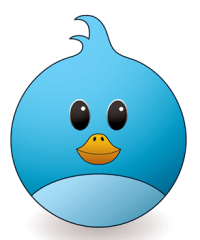Dan Zarrella
Weekdays or Weekends - Which is the Best Time to Tweet?

Which is the better day and time to send tweets for your company or nonprofit? Well, there’s conflicting information on this. 🙁
If we listen to a June 2012 Buddy Media report, then certain industries can benefit more from tweeting on weekends. If we listen to a study by bit.ly, tweeting a link earlier in the week (Monday through Thursday) will give you the best chance.
Then, if we listen to HubSpot’s Dan Zarrella, who analyzed 200,000 link-containing tweets, click-through rates (CTRs) are higher on Friday, Saturday, and Sunday than during the week.
So, what now?
You’re probably wondering which report to follow. Well, surprise…NONE!
I think it’s important to learn from these studies to guide us with our own marketing tactics. But, inevitably, each organization needs to measure and track its own results to see what works best with its target market segments. At least you have a good starting point now.
* I follow Dan Zarrella’s blog because I believe that he’s at the helm of social media marketing research.
Source:
Brands’ Twitter Engagement Rates Seen Higher on Weekends (MarketingCharts)
Getting More Facebook Likes, Comments, and Shares
Thanks to social media “scientist,” Dan Zarrella, we now know how we can get more likes, comments, and shares on Facebook. His latest infographic is based on collected data on more than 1.3 million posts published on the top 10,000 Facebook pages. And here’s what he discovered:
- Between photos, text, video, and links, photos perform best for likes and sharing.
- Text outperforms the others for comments.
- Very short or longer posts have a higher like percentage.
- Longer posts get more shares.
- When you use words such as “I” or “me,” you’ll get more likes.
- Very negative posts get more comments than positive ones.
- Posting content later in the day gets more likes and shares. (In your same time zone, I imagine.)
- Posting on the weekend gets more likes.
Does any of this data surprise you?

Get Better Click-Through Rates by Segmenting Email Lists
Market segmentation has been part of the marketing discipline for a very long time. Yet, when it comes to e-mail marketing, there are still many marketers, SMBs (small/medium businesses), and nonprofits that send the same message and content to all their market segments.
Definition: The process of defining and subdividing a large homogenous market into clearly identifiable segments having similar needs, wants, or demand characteristics. Its objective is to design a marketing mix that precisely matches the expectations of customers in the targeted segment.”
Unless your lists are totally homogeneous, you’ll get better click-through results when you segment your list. According to Dan Zarrella of HubSpot, “you can generally segment based on categories such as geography (i.e. where they live), demographic/personal information, interest types (i.e. preferred content subjects or formats), behavior (i.e. how engaged they are with your company/content/brand), or industry/role.”
His latest study shows a full percentage increase when sending e-mails to 2-6 segments versus just one. When your content has more relevance, it can produce better results with your e-mail marketing efforts.
Are you segmenting your e-mail lists? What results have you experienced?

Related:








